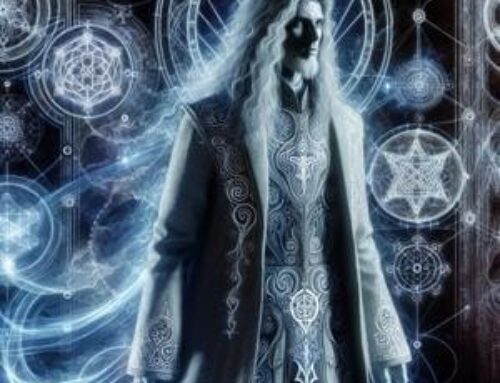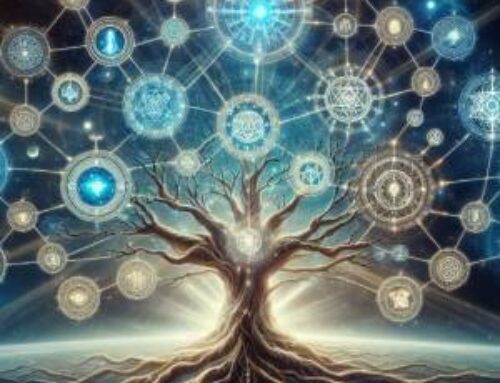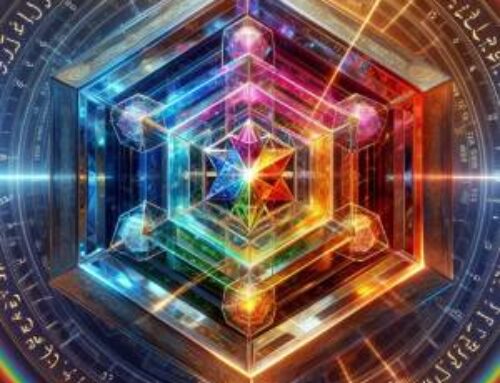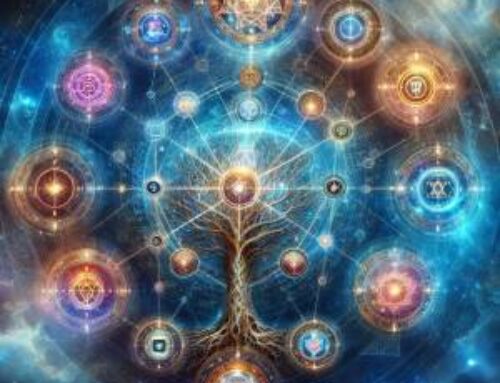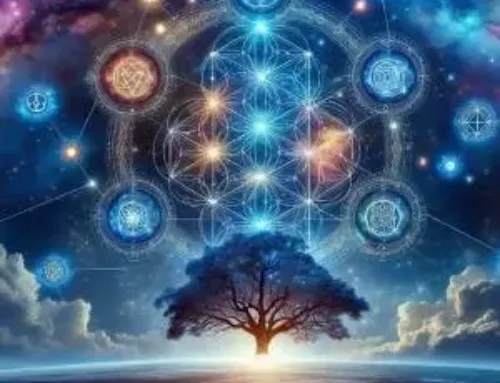Contents
Introduction to Kabalah
The enigma of Kabalah, also written as Kabbalah—a mystical tradition bridging the divine and the mortal, the infinite and the finite. Rooted deep within ancient teachings, Kabalah offers profound insights into the universe’s very fabric and our place within it. Symbols and metaphors abound, guiding seekers towards deeper understanding and spiritual ascension. Dive into Kabalah’s core concepts, its rich symbolic lexicon, and practical applications. Prepare for a journey through esoteric wisdom that has intrigued minds for centuries.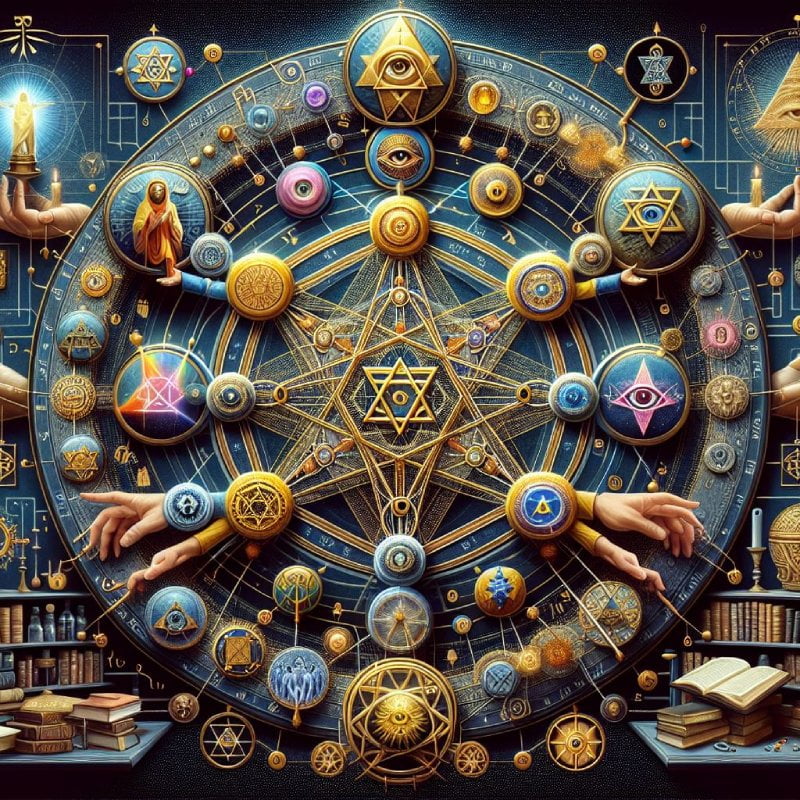
The Symbolic Language of Kabalah
Metaphorical Expressions
Kabalah, in its essence, employs a rich metaphorical language, translating spiritual realities into tangible terms. Picture this: the lower world as tree branches, while the upper world forms its roots. A profound image, illustrating the interconnectedness and hierarchical nature of existence. The physical realm? Merely a manifestation of loftier spiritual truths.
The Tree of Life
Undoubtedly, one of Kabalah’s most pivotal symbols—the Tree of Life (1). This intricate diagram maps the universe’s structure and the path to enlightenment. Ten spheres, or Sephiroth, represent divine attributes and creation stages. Interconnecting these are 22 paths, each corresponding to a Hebrew letter, illustrating divine energy’s dynamic flow. The tree is not just a symbol but a blueprint for spiritual ascent.
Hebrew Letters and Mystical Symbols
Imagine each Hebrew letter as a mystical symbol, brimming with meaning and energy. Take Aleph (א): a symbol of unity and beginnings. Tav (ת), on the other hand, signifies completion and truth. Contemplating these letters can align individuals with specific divine attributes, enriching their lives profoundly.
The Structure and Function of the Sephiroth
The Ten Sephiroth
Here’s a roll call of the Sephiroth: Kether (Crown), Chokmah (Wisdom), Binah (Understanding), Chesed (Mercy), Geburah (Strength), Tiphareth (Beauty), Netzach (Victory), Hod (Splendor), Yesod (Foundation), and Malkuth (Kingdom). Each Sephirah embodies a divine facet and a creation stage. Kether, at the apex, radiates divine light, while Malkuth, at the base, symbolizes the physical world.
The Sephiroth, or emanations, form the structure through which Kabbalists understand God’s manifestations and the universe (2).
Pathways of Divine Energy
Consider the pathways between Sephiroth as conduits for divine energy, guiding spiritual ascent and descent. They map the journey from abstract divine principles to tangible material experiences, navigating through varying levels of spiritual awareness.
The Role of Tradition and Initiation
Oral Tradition and Secret Teachings
Kabbalistic wisdom? Traditionally whispered from teacher to student. This oral legacy ensures teachings are conveyed accurately, preserving their depth and context. Some Kabbalah aspects, particularly Hermetic Kabbalah, remain cloaked in secrecy, revealed only to the initiated.
Ethical Preparation and Spiritual Readiness
Before delving deeper, students must commit to spiritual and ethical growth. This ethical groundwork ensures the potent teachings of Kabbalah are wielded responsibly, for the greater good.
Practical Daily Applications of Kabalah
Meditation and Contemplation
Meditation practices show dissociable brain activation and deactivation patterns, congruent with their psychological and behavioral aims (3).
Meditation is a cornerstone of Kabbalah, a method to still the mind and commune with the divine. Focusing on specific symbols or Hebrew letters attunes practitioners to their spiritual energies. Regular meditation cultivates inner peace and opens channels for divine insight.
Prayer and Reflection
Prayer in Kabalah transcends personal petitions—it’s a dialogue with the divine. Kabbalistic prayers often incorporate divine names and phrases resonating with higher frequencies. Through daily prayer, individuals express gratitude, seek guidance, and align their intentions with the divine.
Benefits of Kabalah Practice
Enhanced Spiritual Awareness
Engaging with Kabbalistic practices heightens spiritual awareness, offering a profound understanding of one’s place in the universe and connection to the divine, thus fostering a deeper sense of purpose.
Emotional and Mental Balance
Kabbalistic meditation and ethical living contribute significantly to emotional and mental well-being. These practices mitigate stress, promote inner tranquility, and enhance mental health by aligning individuals with universal harmony.
Personal Growth
Kabalah’s principles encourage continual self-improvement. Meditating on the Sephiroth and Hebrew letters fosters qualities like wisdom, understanding, and compassion, leading to a richer, enlightened life.
Conclusion
Kabalah, with its intricate system for understanding the universe and the divine, offers a roadmap for spiritual growth. Through symbolic language, structured teachings, and a commitment to ethical living, Kabbalah guides seekers towards higher consciousness. Whether through studying the Tree of Life, contemplating Hebrew letters, or practicing daily meditation, Kabalah offers profound insights and transformative potential.
FAQ- Kabalah
1. What is the significance of the Tree of Life in Kabalah?
A: The Tree of Life is central to Kabbalah, representing cosmic structure and the spiritual journey. Comprising ten Sephiroth and 22 paths, it embodies divine aspects and creation stages.
2. How are Hebrew letters used in Kabbalistic practice?
A: Hebrew letters are mystical symbols with deep meanings and energies. Used in meditation, they help attune practitioners to divine energies, enhancing spiritual awareness.
3. What is the purpose of ethical preparation in Kabbalistic study?
A: Ethical preparation ensures students are committed to growth and responsible conduct, preparing them for Kabbalah’s deeper teachings and their responsible use.
4. Why is Kabbalistic knowledge often kept secret?
A: Certain Kabbalistic knowledge remains secret, especially Hermetic Kabbalah, revealed only to the prepared, preserving the teachings’ integrity and power.
5. Where can I learn more about Kabalah?
A: The Hermetic Academy offers extensive resources and guidance for those keen on exploring Kabalah further, providing structured programs for understanding and applying its principles.
References
(1) Rubenstein, E. (2020). The Tree of Life: The Kabbalah of Immortality. Hermetic World, Paphos.
(2) Mathers, S. L. M. (1887). The Kabbalah Unveiled. London: George Redway.
(3) Fox, K., Dixon, M., Nijeboer, S., Girn, M., Floman, J., Lifshitz, M., Ellamil, M., Sedlmeier, P., & Christoff, K. (2016). Functional neuroanatomy of meditation: A review and meta-analysis of 78 functional neuroimaging investigations. Neuroscience & Biobehavioral Reviews, 65, 208-228. https://doi.org/10.1016/j.neubiorev.2016.03.021.

